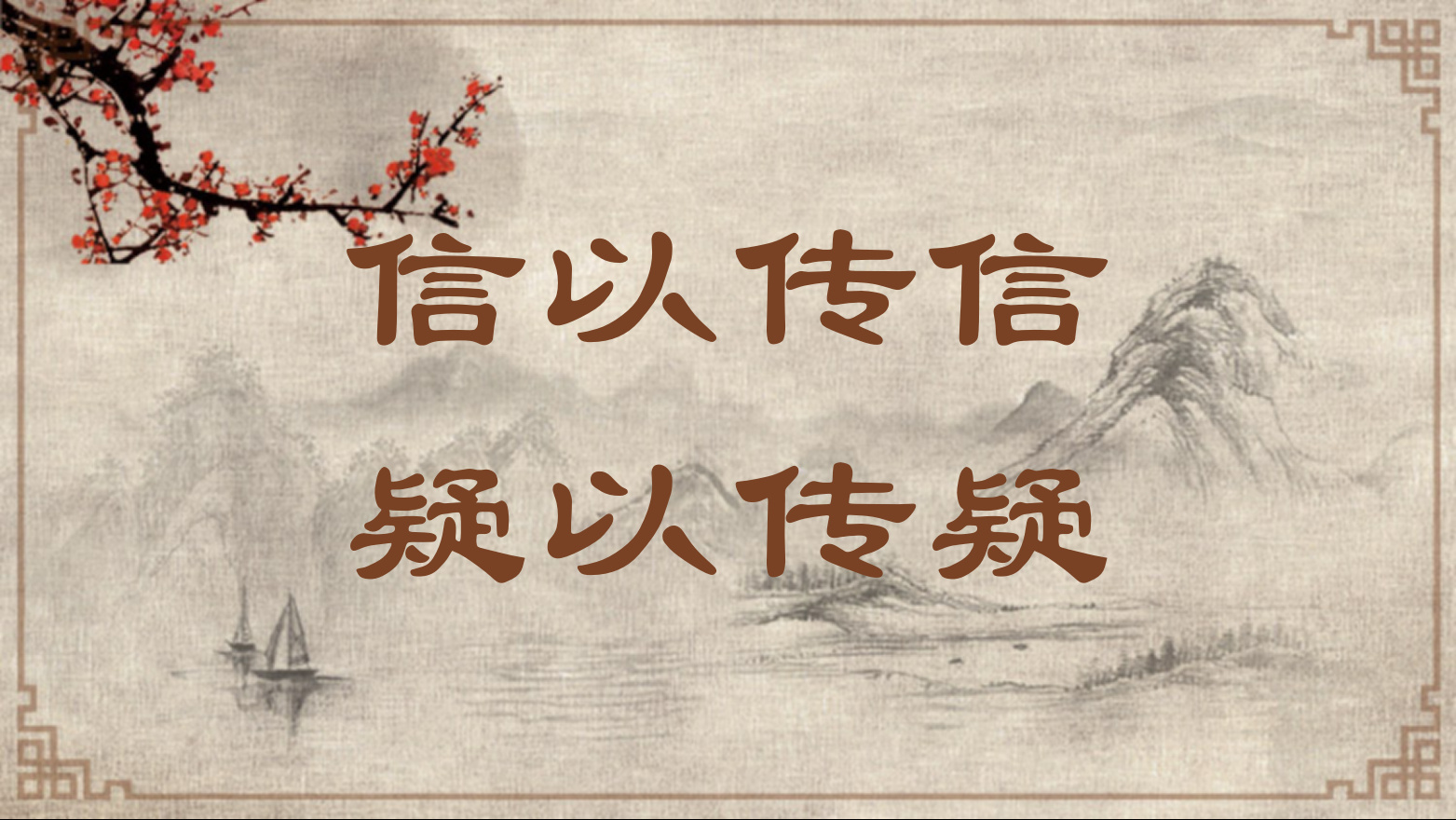Pass Down both What Is Credible and What Is Unverifiable

可信的就作为可信的留传下去,可疑的就作为可疑的留传下去。出自《穀梁传》。它体现了中国古史编纂与史学研究的传统,具有历史方法论的意义。它的意思是:历史的研究与书写要依据文献资料,对于文献资料及前人的不同说法,要采取客观审慎的态度,尊重史料,不主观臆断。可以确证的就下判断,不能确证或存有争议的不妨存疑。这种方法论是中国“良史”理念的具体体现,包含着科学史学的精神。
Contained in Guliang's Commentary on The Spring and Autumn Annals, this concept embodies the ancient Chinese tradition of history compilation and historiography, and is an important historical methodology. This concept means that the research and writing of history should be based on historical documents. One needs to take an objective and prudent attitude towards different accounts in historical documents and given by different historians. One should respect historical data and refrain from making arbitrary judgments. Judgments should not be made until verification can be made; where verification cannot be made, disagreements should be allowed. This methodology is a concrete manifestation of the Chinese concept of "good history" and expresses a well-balanced attitude of historiography.
引例 Citation:
◎《春秋》之义,信以传信,疑以传疑。(《穀梁传·桓公五年》)
《春秋经》的写作原则是,可信的就作为可信的留传下去,可疑的就作为可疑的留传下去。
The principle guiding the writing of The Spring and Autumn Annals is passing down both what is credible and what is unverifiable. (Guliang's Commentary on The Spring and Autumn Annals)
推荐:教育部 国家语委
供稿:北京外国语大学 外语教学与研究出版社
责任编辑:钱耐安





